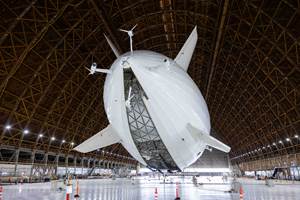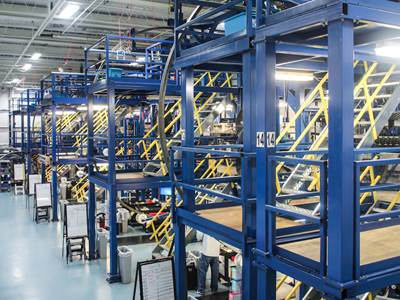High-performance vs. general purpose
Jeff Sloan notes the closing gap between “aerospace” and “industrial” composites.
If you’re reading this editorial, it’s very likely that you are a subscriber to HPC. And if you are a subscriber to HPC, it’s very likely that you are involved in some way in the design and manufacture of composite structures for aerospace, high-performance automotive and other applications that consume continuous carbon fiber. And I know this is so because that’s the business principle under which HPC operates: We editors cater to the information needs of high-performance composites manufacturers, and suppliers that want to sell to high-performance composites manufacturers pay us for the opportunity to advertise in support of our editorial mission.
What you may not know is that we also have a sister publication, Composites Technology (CT) magazine, which targets composites professionals who serve the automotive, wind, marine, construction and infrastructure markets with the manufacture of primarily glass fiber-reinforced composite parts and structures. I’ve heard some people refer to such applications as “general-purpose.” Or, less charitably, “industrial.” Or, even less charitably, “tubs and countertops.”
For many years these two “sides” of the industry seemed like the Odd Couple — two people living under one roof, each with markedly different habits, yet oddly joined by a common interest. And despite the common interest — manufacture of fiber-reinforced polymers — there seemed to exist little that could bring these two sides closer together.
And then, a few years ago, funny things started to happen. First, the aerospace composites side, which had for so long relied on the autoclave to cure composite structures, started looking for autoclave-free options, which led it to the general-purpose world and its developing resin infusion, resin transfer molding (RTM), compression molding processes — and even to reinforced thermoplastics. Meanwhile, the general-purpose side, seeking to reduce weight even further in wind blades, marine components and automotive structures, started using continuous carbon fiber. Now, it’s much more difficult — and in many ways unfair — to define sides anymore.
Take, for instance, the BMW i3, the new, all-electric vehicle that features continuous carbon fiber composites in the passenger cell (also known as body-in-white). This is not a high-performance sports car or a Formula 1 racecar. It’s a vehicle designed for everyday urban transportation. We recently toured the BMW plant that assembles the i3 and wrote an article about it. If you were me, would you place this story in HPC or CT? It’s automotive, but a continuous carbon fiber application using RTM. We chose to publish the article in CT (and then summarize it in this issue’s “News” section), but not without some serious contemplation.
None of this should be surprising. You may not always sense it, but the composites industry is unusually and demonstrably dynamic, creative and fast-changing, so it seems inevitable to me that as it evolves, we would see people like you seeking out best practices wherever they exist. A sign of this evolution — not to mention a good place to find those best practices — is the launch, this October in Orlando, Fla., of the Composites and Advanced Materials Expo (CAMX) trade show and conference, co-hosted by SAMPE and the American Composites Manufacturers Assn. (ACMA) — previously bastions in North America of the two “sides” if you’re looking for context. It is shaping up to deliver on its promise of presenting the industry as a whole. We’ll be at CAMX, keeping tabs on the evolution, and hope to see you there.
Related Content
The potential for thermoplastic composite nacelles
Collins Aerospace draws on global team, decades of experience to demonstrate large, curved AFP and welded structures for the next generation of aircraft.
Read MoreNext-generation airship design enabled by modern composites
LTA Research’s proof-of-concept Pathfinder 1 modernizes a fully rigid airship design with a largely carbon fiber composite frame. R&D has already begun on higher volume, more automated manufacturing for the future.
Read MorePEEK vs. PEKK vs. PAEK and continuous compression molding
Suppliers of thermoplastics and carbon fiber chime in regarding PEEK vs. PEKK, and now PAEK, as well as in-situ consolidation — the supply chain for thermoplastic tape composites continues to evolve.
Read MorePlant tour: Spirit AeroSystems, Belfast, Northern Ireland, U.K.
Purpose-built facility employs resin transfer infusion (RTI) and assembly technology to manufacture today’s composite A220 wings, and prepares for future new programs and production ramp-ups.
Read MoreRead Next
Plant tour: A&P, Cincinnati, OH
A&P has made a name for itself as a braider, but the depth and breadth of its technical aptitude comes into sharp focus with a peek behind usually closed doors.
Read More“Structured air” TPS safeguards composite structures
Powered by an 85% air/15% pure polyimide aerogel, Blueshift’s novel material system protects structures during transient thermal events from -200°C to beyond 2400°C for rockets, battery boxes and more.
Read MoreCFRP planing head: 50% less mass, 1.5 times faster rotation
Novel, modular design minimizes weight for high-precision cutting tools with faster production speeds.
Read More






















